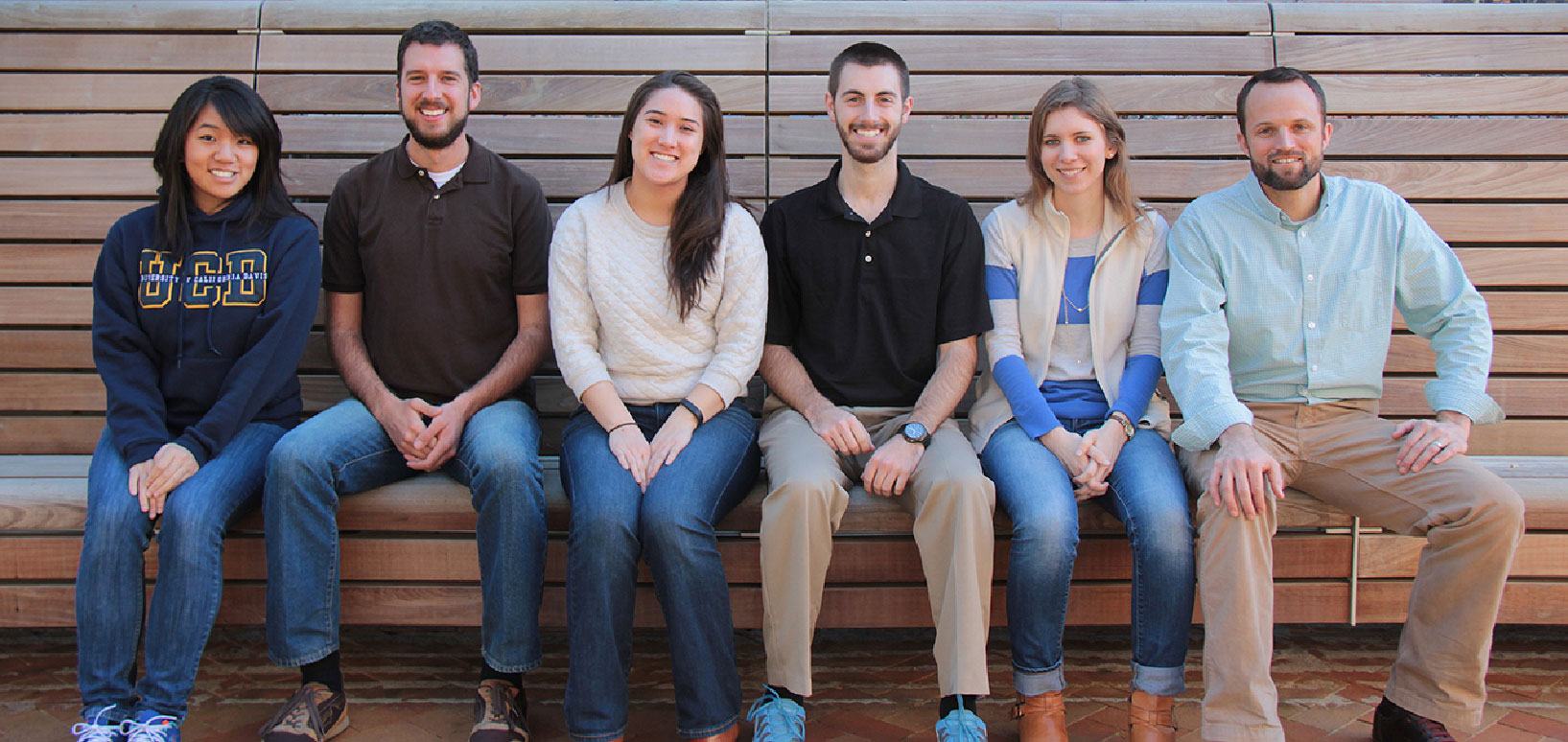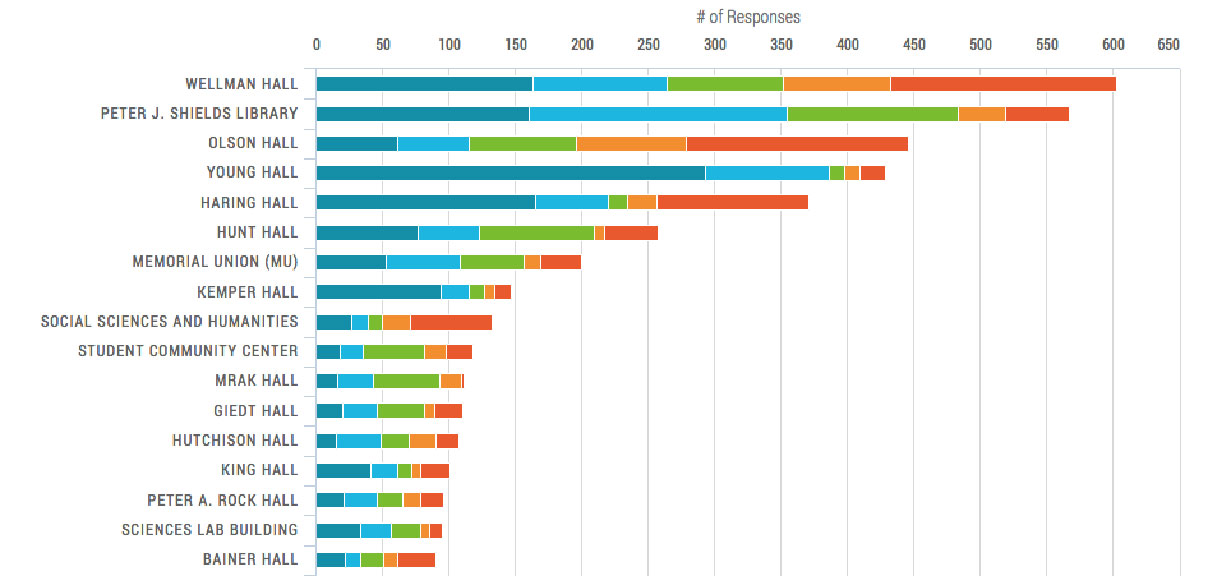Are you hot, cold, or perfect?
By Grant Nejedlo
October 1, 2015
It’s early October, and while it’s still warm and sunny outside, you’re sitting at your desk wrapped up in a sweater, frantically typing to keep warm. The office thermostat says the room is within campus standards of 68 – 78 degrees, but you feel like there has to be an A/C issue, and you’d like someone to know about it.
Well, there’s an app for that…
The Facilities Management Energy Conservation Office’s (ECO) TherMOOstat app allows staff, faculty and students to provide feedback on how comfortable your space feels, be it a classroom, office, lab or other.
At TherMOOstat.ucdavis.edu you can access the web-based app and provide information daily on any building, and room, on campus. (You can also find it as the “TherMOOstat” tile on my.ucdavis.edu) This information will be used to identify energy issues and develop energy saving projects across campus.
Right now, staff account for around 9 percent of TherMOOstat feedback, with students comprising the rest. As you might imagine, student feedback tends to focus more on classroom spaces, while staff feedback centers on… you guessed it – office space.
Please note that “feedback” is the operative word here. The app unfortunately doesn’t give you the ability to remotely raise or lower the temperature in a space.

Thermostats everywhere
The ECO staff doesn’t just like data – they live for it. Just look at them grinning there as they eagerly await your thermal feedback! When you get a lot of people in a room independently submitting comfort information, it’s like having multiple temperature sensors in one room, instead of the lone sensor in a single thermostat. You can then start comparing individual comfort level to what the thermostat on the wall says. All this information allows ECO to correlate feedback with actual thermostat readings. However, often they’ll find that thermostat readings do not necessarily match well with people’s comfort in that space.
We’re not afraid of comfort
ECO takes all those responses and tries to fine-tune and optimize the energy use in a space – whether through mechanical repairs or changes to the heating, ventilation and air conditioning programming. For example, if making people comfortable requires increasing the amount of energy needed to heat or cool a space, ECO drills down further into trends in the data (remember, they love this stuff) and makes site visits to identify potential mechanical issues or other culprits (e.g., a refrigerator placed too close to a thermostat, a computer server room needing to be put on its own AC zone, an air diffuser/grille pointed in the wrong direction, etc.) that can be addressed to fix the problem. This is all done with your comfort and happiness in mind, because being comfortable in a space can help boost productivity and learning.

The Wellman investigation
The graph to the right reflects nine months of TherMOOstat data for the buildings receiving the most feedback. Wellman Hall took the prize for receiving the most feedback -- about 600 submissions -- and the fact that it included a nearly equal number of hot and cold responses got ECO wondering, “what’s going on in Wellman Hall?”
This summer, ECO started looking more closely at the TherMOOstat feedback received for those spaces, alongside the ventilation and room occupancy in Wellman Hall’s classrooms. The image below represents the responses to TherMOOstat’s simple question “How does the room feel?”

This is ECO’s first attempt at a whole-building investigation and getting more feedback in certain rooms is a critical step before taking any action on the heating, ventilation and air conditioning system in a building. The same experiment can be conducted for other buildings in the campus core and you’re encouraged to participate, by sending your thermal feedback on any campus space.
The holidays are just around the corner (yes, we went there), and that’s a more appropriate time to be donning a sweater at your desk. However, if you find yourself breaking out the tank tops and a desk fan just to get comfortable in December, visit TherMOOstat.ucdavis.edu and select the sweating cow icon.
No substitute for a work order
Being housed in Facilities Management is ideal for ECO. This allows ECO staff to work closely with FM’s Building Maintenance Services unit, which fixes the vast majority of temperature-related issues on campus. Facilities Management’s Customer Support Center (530-752-1655) is still the appropriate place to submit a service request for repairs including being too hot or too cold in a building. However, significant feedback about a space can lead to ECO submitting a work order for Building Maintenance Services’ attention. While many “I’m too hot/cold” calls can be addressed through maintenance adjustments, in many cases, a major capital renewal project may be necessary to achieve the desired results. ECO also has access to historic work orders submitted for a space, which allows them to look holistically at the problem. Specifically, ECO’s Energy Feedback and Energy Projects & Commissioning teams can combine work order history and project history with staff feedback. With that information ECO can develop energy projects and initiatives that will keep UC Davis on track to meet its energy and carbon goals and improve the performance of facilities across campus.
Related Links
- Energy Conservation Office website – eco.ucdavis.edu
- ECO’s Campus Energy Education Dashboard, an innovative portal to learn about energy use on campus
- Contact the ECO team at energyfeedback@ucdavis.edu
Grant Nejedlo is communications and training manager for Facilities Management.
